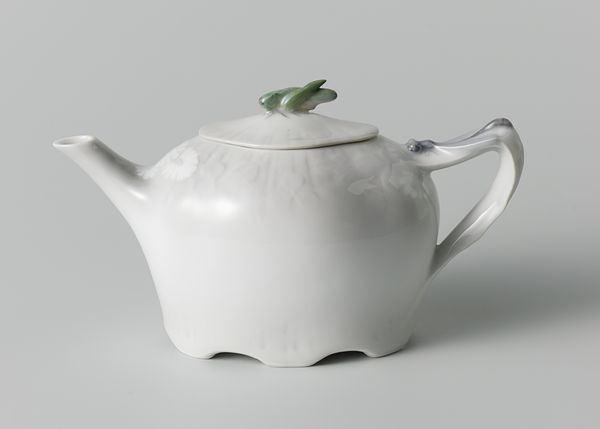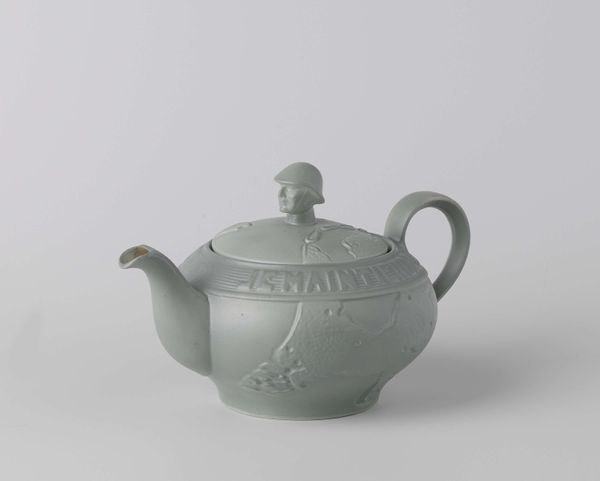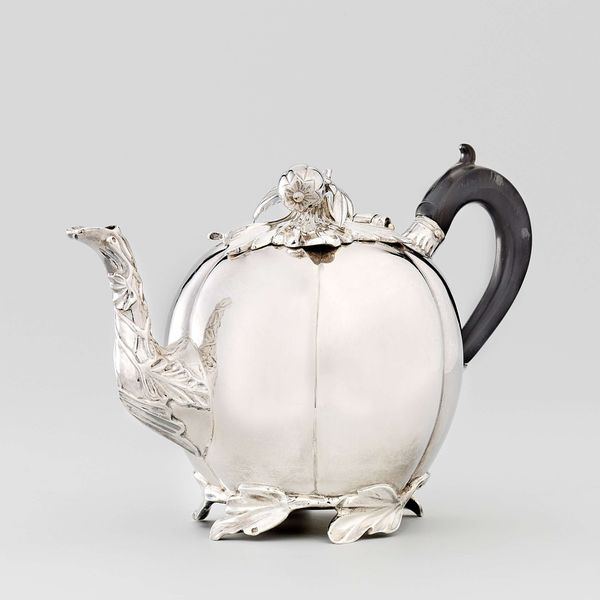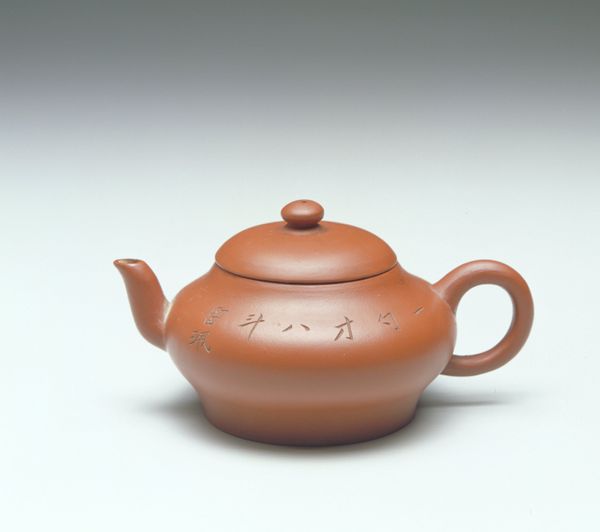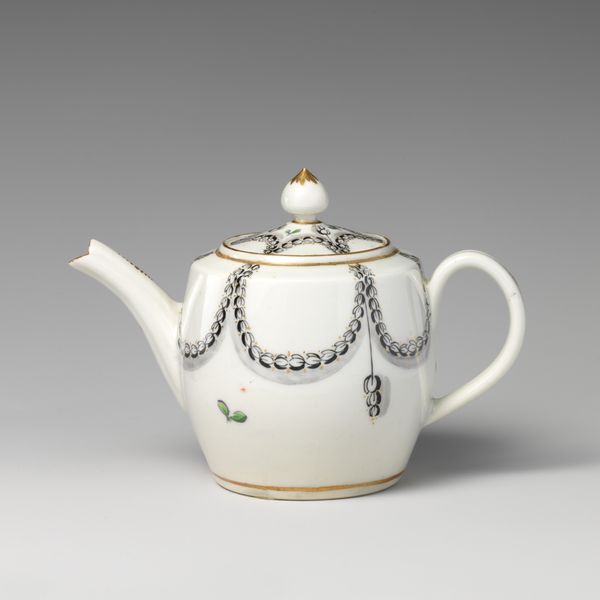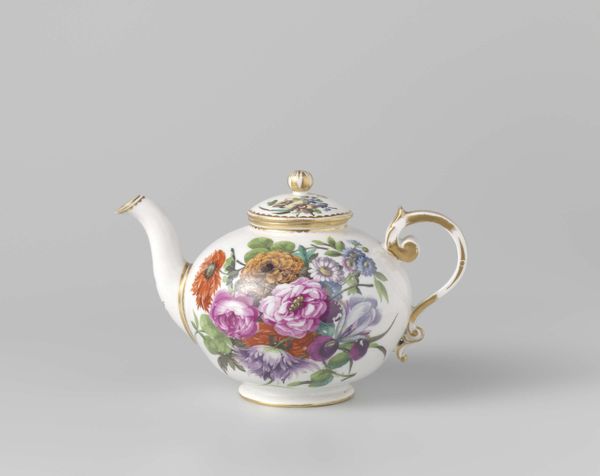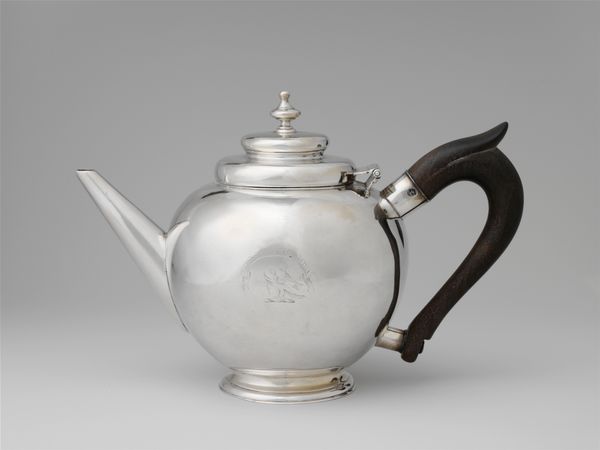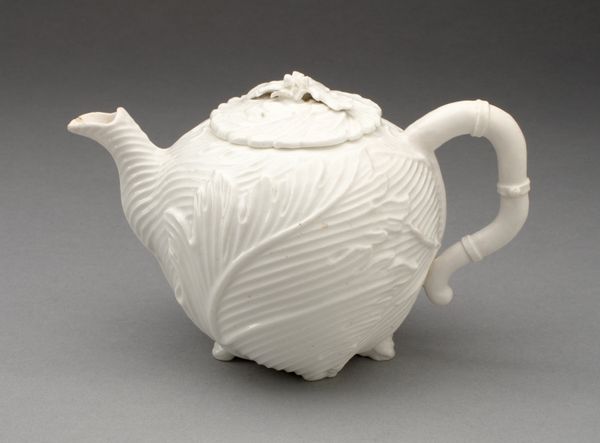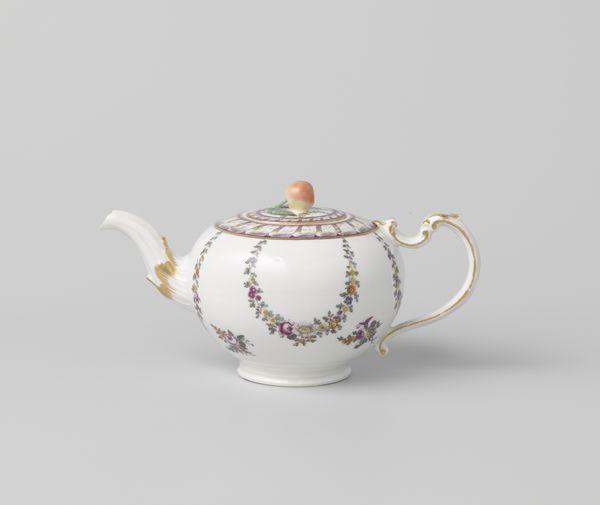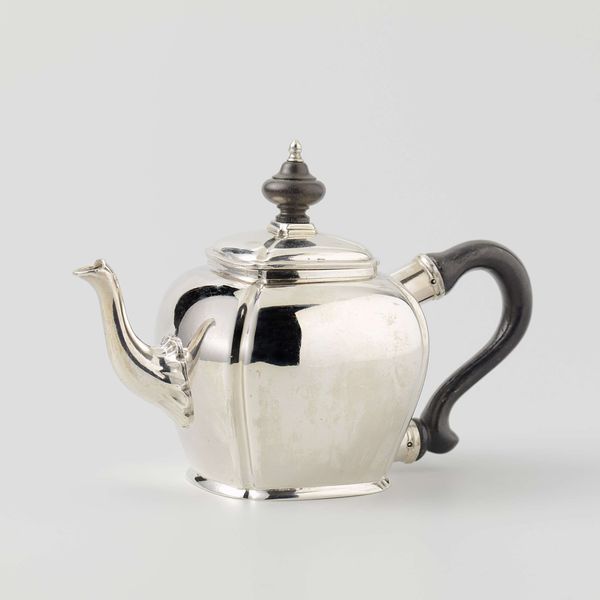
ceramic, porcelain
#
ceramic
#
porcelain
#
geometric
#
rococo
Copyright: Rijks Museum: Open Domain
Curator: Look at this striking porcelain teapot, made sometime between 1759 and 1771 by the Weesper porseleinfabriek. It's a captivating example of rococo style. Editor: It's so...pristine. Almost unnervingly white. It gives me a sense of restrained luxury, like it’s too precious to actually use. Curator: Precisely! Porcelain teapots during this era were status symbols, reflecting the growing popularity of tea consumption and global trade networks. The factory’s existence and artistry need to be viewed within that colonial framework. Editor: The geometric shape is interesting – unexpected, given the elaborate floral and figurative reliefs. Those figures seem like little putti...What’s the story there? Curator: The rococo period reveled in playful, often romantic imagery. These motifs spoke to the ideals of leisure and refinement prized by the elite. Each design was politically positioned to align with the cultural tastes of the monarchy and aristocratic consumers who had an immense power over all arts and culture productions. Editor: And I can see that. But, taken out of context, they evoke a slightly saccharine sensibility for modern eyes. There’s a sense of exclusion implicit in such rarefied objects. Who was permitted access and at whose expense? Curator: It raises very important questions, I agree. The whiteness is an illusion. Every porcelain item, while reflecting sophistication, can be linked to exploitation across socio-political spheres. Editor: Examining this, I wonder how we reclaim objects loaded with historical baggage, and recast them to critique our present socio-political imbalances. Curator: Perhaps, by actively exploring the layers of historical context behind it, like here, and confronting the uncomfortable truths it holds. Editor: So true! I come away realizing that a beautiful, elegant object isn't always what it appears. Curator: Indeed, this piece holds layers of aesthetic value and historical realities for a deeper exploration.
